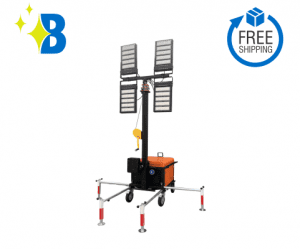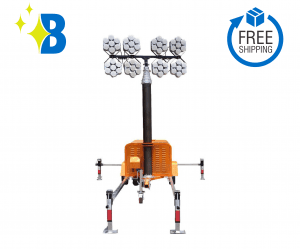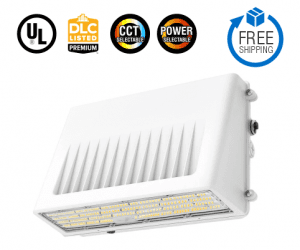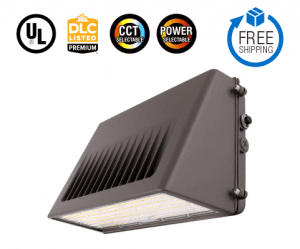Popular Products
-
 1500W LED Portable Light Tower – LT1500
1500W LED Portable Light Tower – LT1500 -
 3000W LED Mobile Light Tower – LT3000
3000W LED Mobile Light Tower – LT3000 -
 76/105/125W Selectable LED Full Cutoff Wall Pack Light 30/40/50K CCT AC120-277V 0-10V Dimmable PC Lens w/ Photocell (White)
76/105/125W Selectable LED Full Cutoff Wall Pack Light 30/40/50K CCT AC120-277V 0-10V Dimmable PC Lens w/ Photocell (White) -
 45/63/90W Selectable LED Full Cutoff Wall Pack Light 30/40/50K CCT AC120-277V 0-10V Dimmable PC Lens w/ Photocell (White)
45/63/90W Selectable LED Full Cutoff Wall Pack Light 30/40/50K CCT AC120-277V 0-10V Dimmable PC Lens w/ Photocell (White) -
 76/105/125W Selectable LED Full Cutoff Wall Pack Light 30/40/50K CCT AC120-277V 0-10V Dimmable PC Lens w/ Photocell
76/105/125W Selectable LED Full Cutoff Wall Pack Light 30/40/50K CCT AC120-277V 0-10V Dimmable PC Lens w/ Photocell -
 45/63/90W Selectable LED Full Cutoff Wall Pack Light 30/40/50K CCT AC120-277V 0-10V Dimmable PC Lens w/ Photocell
45/63/90W Selectable LED Full Cutoff Wall Pack Light 30/40/50K CCT AC120-277V 0-10V Dimmable PC Lens w/ Photocell -
 30/45/63W Selectable LED Full Cutoff Wall Pack Light 30/40/50K CCT AC120-277V 0-10V Dimmable PC Lens w/ Photocell
30/45/63W Selectable LED Full Cutoff Wall Pack Light 30/40/50K CCT AC120-277V 0-10V Dimmable PC Lens w/ Photocell -
 76/105/125W Selectable LED Semi Cutoff Wall Pack Light 30/40/50K CCT AC120-277V 0-10V Dimmable Glass Lens w/ Photocell
76/105/125W Selectable LED Semi Cutoff Wall Pack Light 30/40/50K CCT AC120-277V 0-10V Dimmable Glass Lens w/ Photocell -
 45/76/90W Selectable LED Semi Cutoff Wall Pack Light 30/40/50K CCT AC120-277V 0-10V Dimmable Glass Lens w/ Photocell
45/76/90W Selectable LED Semi Cutoff Wall Pack Light 30/40/50K CCT AC120-277V 0-10V Dimmable Glass Lens w/ Photocell
LED Industrial Lighting Knowledge Base
What is the best lighting for a warehouse?
The most versatile and energy efficient choice for lighting your warehouse is with LED light fixtures. They use less energy than any other light source while emitting comparable, if not better, Lumen outputs. LEDs can either be purchased as complete fixtures for new construction or as retrofits for current fixtures.
How long do industrial LED lights last?
Properly designed LED lighting fixtures can last well beyond the 50,000 hours that are advertised in the industry, which can be extremely beneficial, especially in an industrial setting
How many lumens do you need for a warehouse?
For warehouses handling large items, the ideal lumen requirement tends to be around 10 lumens per square feet. For warehouses storing and handling smaller items, this number shoots up to around 30 lumens per square feet. For aisles, something in between is recommended.
What color LED light is best for productivity?
In general, warmer yellow or orange lights tend to be better for relaxing, whereas cooler blue and white lights are good for working, waking up, and concentrating.
What is the lux level required for warehouse?
For warehouses, the recommended lux levels for manned storage areas, according to CIBSE / The Society of Light and Lighting, are a minimum of 150 lux at floor level and ideally 200 lux at the face of any racking. Typically we aim above these recommendations.
Which color LED is the brightest?
White. White is the natural light color emitted from LEDs and closely resemble natural sunlight. White LEDs are the brightest and are an excellent way to significantly improve visibility on the road at night.
Do LEDs really last 50000 hours?
The average lifespan of an LED is often rated up to 50,000 hours. This is about 50 times longer than a typical incandescent, 20-25 times longer than a typical halogen and 8-10 times longer than a typical CFL. If used 12 hours a day, an LED rated at 50,000 hours will last more than 11 years.
How much area does 5000 lumens cover?
For the average space of 250 square feet, you’ll need roughly 5,000 lumens as your primary light source (20 lumens x 250 square feet).
How far apart should LED lights be?
As a rule of thumb, we suggest you divide your ceiling height by 2 to give you the space required between each downlight. For example if your ceiling is 8 foot high, then position your lights 4 feet apart. Again, this is only a guideline and you will get a feel for what works best in your individual space.
What is better 5000K or 6000K?
So, our eyes will consider 6000K LEDs to be brighter, compared to the 5500K, which is a natural white, and 5000K, which is warm white. The truth is, that the 5000K LED bulbs are as bright as 6000K LED, so selecting LEDs with one of these color temperatures is a matter of taste.
